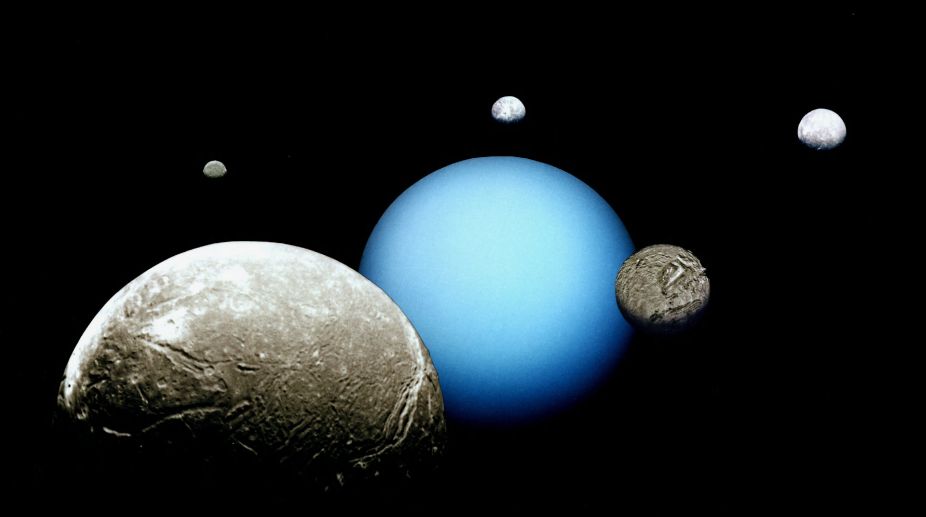Scientists have found that Uranus' magnetic field gets flipped on and off like a light switch every day as the planet rotates.
Researchers from Georgia Institute of Technology in the US made the discovery based on the data from NASA's Voyager 2 spacecraft that sped past Uranus in 1986.
Advertisement
“The magnetosphere is 'open' in one orientation, allowing solar wind to flow into the magnetosphere; it later closes, forming a shield against the solar wind and deflecting it away from the planet,” researchers said.
This is much different from Earth's magnetosphere, which typically only switches between open and closed in response to changes in the solar wind.
Since the same alignment of Earth's magnetosphere is always facing toward the sun, the magnetic field threaded in the ever-present solar wind must change direction in order to reconfigure Earth's field from closed to open. This frequently occurs with strong solar storms.
Uranus lies and rotates on its side, and its magnetic field is lopsided – it's off-centred and tilted 60 degrees from its axis.
Those features cause the magnetic field to tumble asymmetrically relative to the solar wind direction as the icy giant completes its 17.24-hour full rotation.
Rather than the solar wind dictating a switch like here on Earth, Uranus' rapid rotational change in field strength and orientation lead to a periodic open-close-open-close scenario as it tumbles through the solar wind, researchers said.
“Uranus is a geometric nightmare. The magnetic field tumbles very fast, like a child cartwheeling down a hill head over heels,” said Carol Paty associate professor at Georgia Institute of Technology.
“When the magnetised solar wind meets this tumbling field in the right way, it can reconnect and Uranus' magnetosphere goes from open to closed to open on a daily basis,” she added.
Reconnection of magnetic fields is a phenomenon throughout the solar system. It is one reason for Earth's auroras.
Researchers used numerical models to simulate the planet's global magnetosphere and to predict favourable reconnection locations.
They plugged in data collected by Voyager 2 during its five-day flyby in 1986. It's the only time a spacecraft has visited.
“Perhaps what we see on Uranus and Neptune is the norm for planets: very unique magnetospheres and less-aligned magnetic fields,” said Xin Cao from Georgia Institute of Technology.
“Understanding how these complex magnetospheres shield exoplanets from stellar radiation is of key importance for studying the habitability of these newly discovered worlds,” Cao added.
The study was published in the Journal of Geophysical Research.











